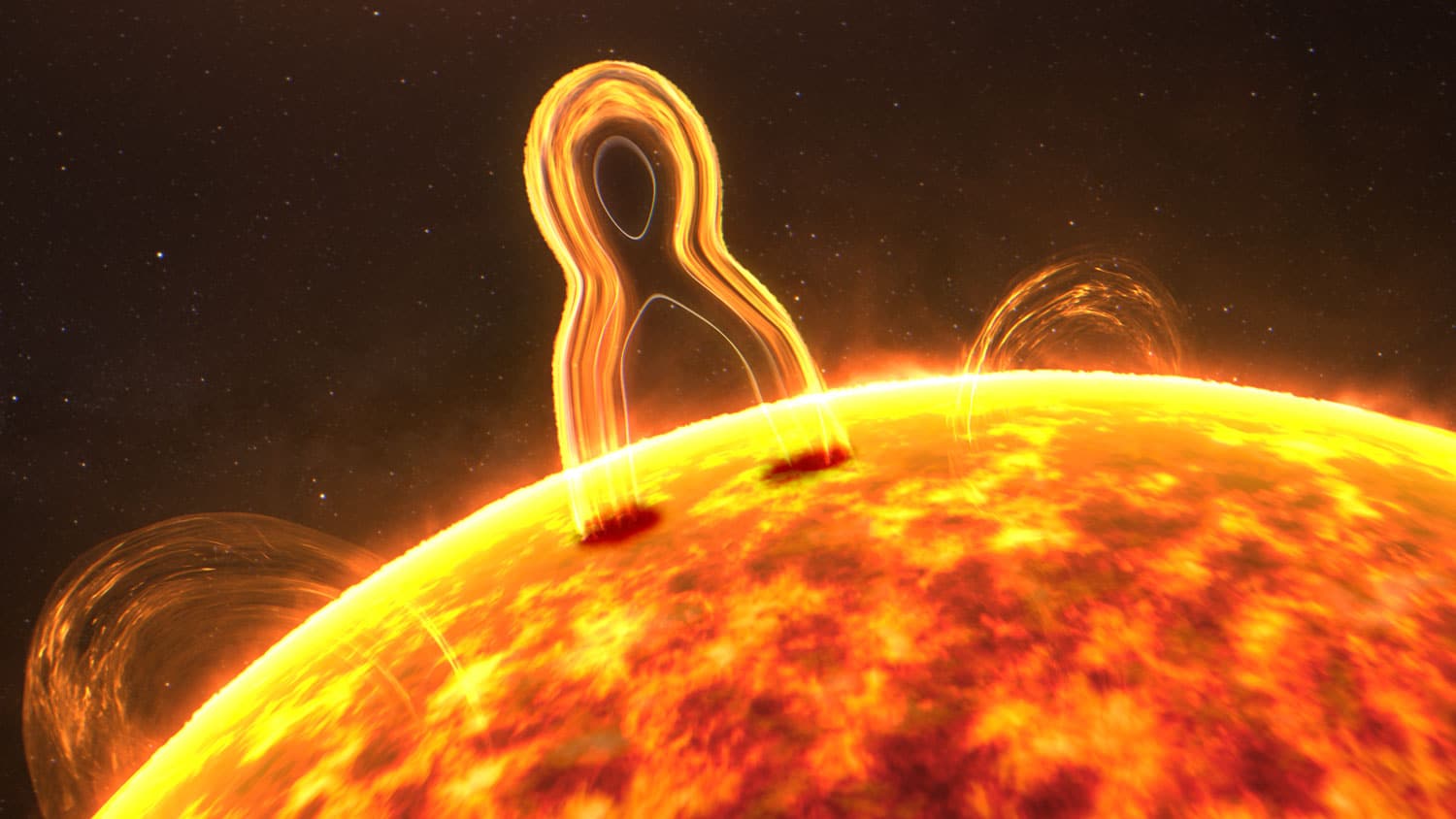The Earth’s magnetic field is never completely silent. Satellite data is supporting an explanation for the explosive nature of magnetic storms which are called magnetic explosions. The swirling motion of ionized gases in a mechanism known as a dynamo generates magnetic energy across the Universe – the twisting and folding of the magnetic field by plasma motion amplifies the magnetic field. When magnetic field lines in opposite directions collide, explosions occur, releasing massive amounts of energy into space.
Magnetic explosions result in solar flares and coronal mass ejections which are huge explosions of energy that can travel to Earth in less than a day when opposing magnetic field lines on the sun collide. While the general mechanics of magnetic reconnection are widely understood, scientists have been unable to explain the precise physics behind the rapid energy release that happens for more than a half-century.
NASA recently observed and photographed these magnetic outbursts on the sun’s surface. The corona, a new form of the magnetic explosion that occurs in the outermost layer of our sun’s atmosphere, was observed by NASA scientists. These explosions are also known as forced magnetic reconnection, which is a triggered eruption of the sun that causes tangled magnetic field lines to break and realign, ejecting particles and energy. These magnetic outbursts can cause space weather storms that damage satellite electronics, cause high currents in power systems on Earth, and expose space travelers to radiation dangers.
Magnetic reconnection occurs when magnetic lines snap and a magnetized plasma is ejected at high speeds. Then, using a tension force, energy is produced and displaced to these plasmas. Returning to the merging of opposing magnetic field lines on the sun, this has resulted in solar flares and coronal mass ejections, which are huge blasts of energy that can reach Earth in less than a day.
The results of observations of these explosions could have enormous significance in predicting space weather, particle physics experiments on our planet, and understanding the sun’s atmosphere. Another advantage of these studies is that magnetic reconnection can explain why the corona is millions of degrees hotter than the lowest layers of the sun’s atmosphere, which is one of solar science’s great mysteries. The prominence is thought to have gained heat during forced reconnection, which could be one explanation or process for the corona’s local heating.
Recent magnetic explosion observations have focused on a critical component of magnetic reconnection, the reconnection rate problem, which specifies the rate at which magnetic lines converge and diverge. The Hall Effect, or the interaction of electric currents with the magnetic fields that surround them, is thought to prevent energy from magnetic fields from being converted into plasma particles. As a result, the amount of pressure at the place where they join is limited, causing the magnetic field line to bend and pinch, resulting in an open outflow of geometry that is required to speed up the reconnection process.
Previous studies have discovered that the Hall Effect is responsible for the conditions for fast magnetic reconnection. However, until now, scientists and academics have been unable to understand the complexities of how the Hall Effect increases reconnection.
NASA’s Magnetospheric Multiscale Mission (MMS) reveals that the theory answers the question of why and how the Hall Effect causes such rapid reconnection, as well as explaining the explosive magnetic energy release mechanism that is fundamental and “ubiquitous” in natural plasmas. Furthermore, the new hypothesis could contribute to a better understanding of solar flares and coronal mass ejections, which create space weather and electrical disturbances on Earth. The new hypothesis may also be used to determine the severity of geomagnetic substorms and the interaction between the solar wind and the Earth’s magnetosphere, in addition to estimating the time scales of solar flares.
The new theory explains how and why the Hall effect, which describes the interplay of magnetic fields and electric currents, accelerates fast reconnection. The Hall effect is a common magnetic phenomenon that is employed in daily technologies such as automobile wheel speed sensors and 3D printers to monitor speed, proximity, positioning, and electrical currents. The observations on this phenomenon could clarify the measurements that could potentially help predict the occurrence of the solar flares through collisionless plasmas. In this laboratory, scientists could study magnetic explosions in deeper detail.
Magnetic explosions have been considered a threat to satellite electronics and other Earth-orbiting technology. Several studies are trying to concretize the impacts of these outbursts on weather systems on our planet. While these magnetic explosions typically happen at least 100,000 miles from Earth, far downstream in our planet’s magnetic tail, on December 20, 2015, scientists observed a reconnection event that was only 30,000 kilometers away which is more than three times closer than normal.
Because of this incident, many researchers believed that reconnection in such proximity was impossible was changed. The initial theory was that the neighboring magnetic field was thought to be too steady for such explosions. The recent explosions in close proximity to Earth may give important implications for future studies on geomagnetic storms and on energy research where findings on magnetic reconnection could help scientists in better controlling magnetic fields in fusion devices. Understanding how magnetic reconnection operates is instrumental to determining how these outbursts may further affect our planet via solar flares or geomagnetic storms or even our weather systems.
When we consider how magnetic explosions work and how they pervade space, the idea could be quite frightening. These magnetic reconnections in galaxies’ centres cause explosions that can be seen billions of light-years away. Solar flares the size of a million atomic bombs, on the other hand, are produced even closer to our planet. The terror of discovering more about the existence of this phenomenon is palpable. However, studying about and observing magnetic explosions should help us avoid any negative effects on space weather today and in the future.


